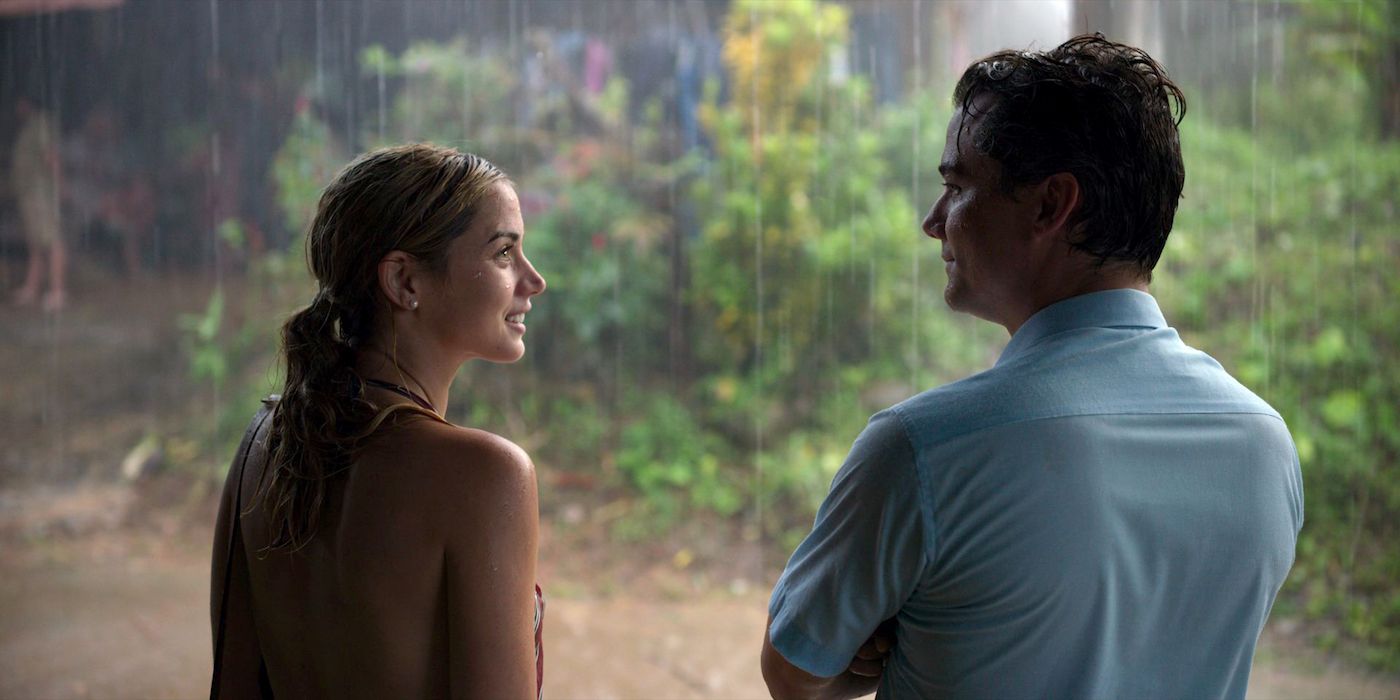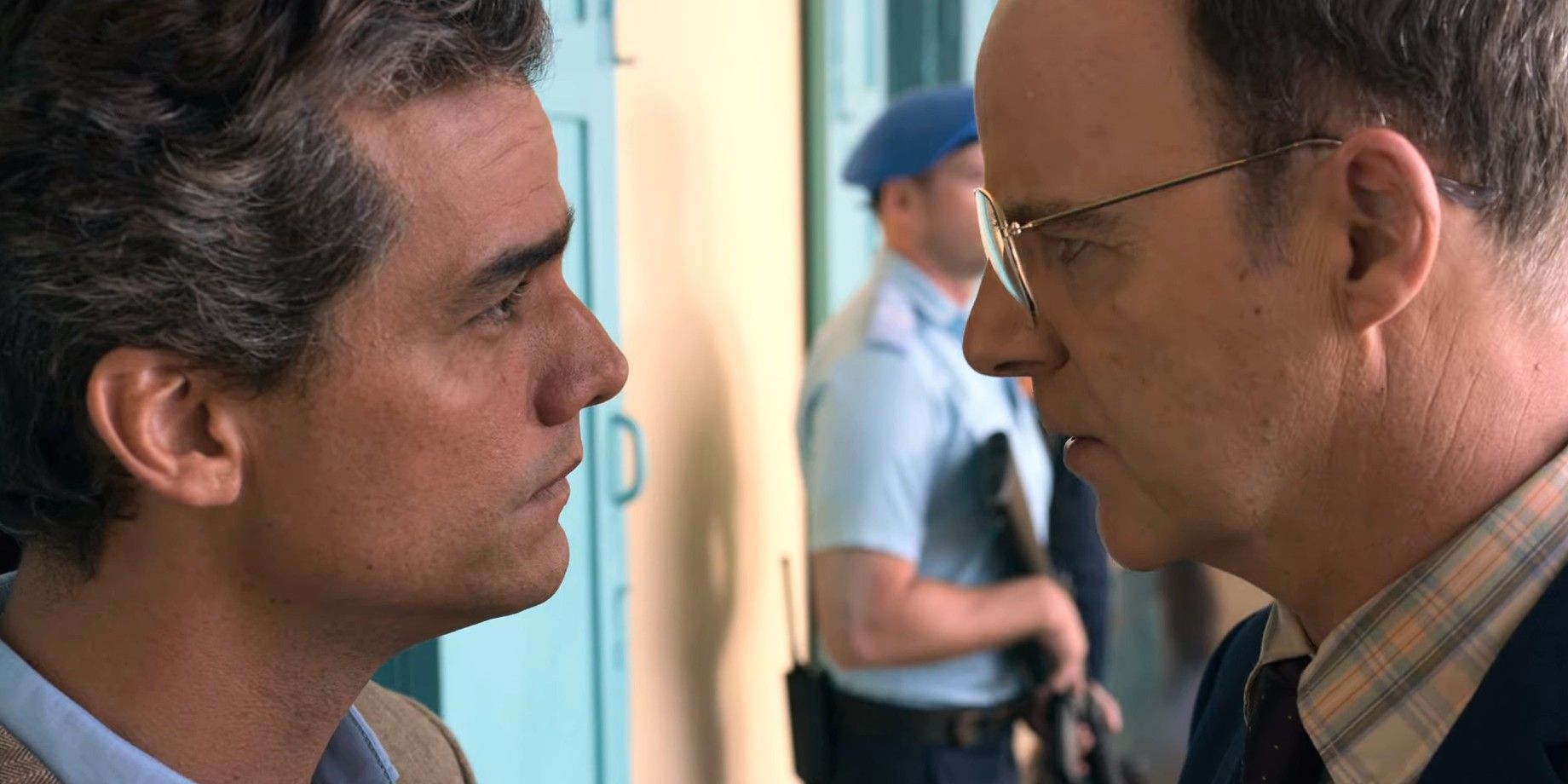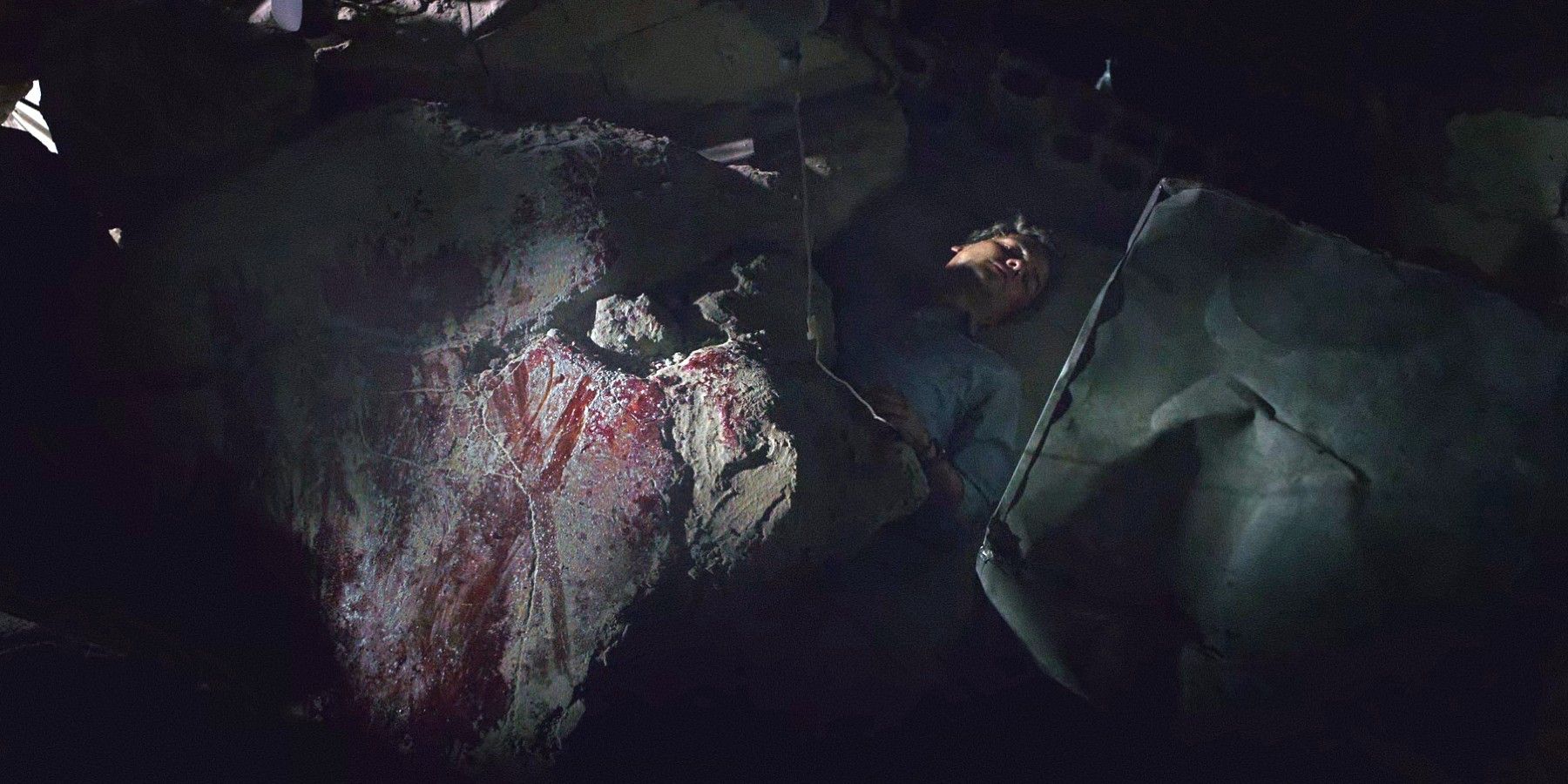A decade after directing HBO’s documentary Sergio, about the life and death of United Nations diplomat Sergio Vieira de Mello, Greg Barker returned to direct a dramatized movie of the same name that’s now been released on Netflix. Sergio stars Wagner Moura as Vieira de Mello and Ana de Armas as his partner, Carolina Larriera. Both the documentary and the movie are based on Samantha Power’s biography Chasing the Flame: Sergio Vieira de Mello and the Fight to Save the World, but there are some notable differences between the two.
Born in Rio de Janeiro, Brazil, Vieira de Mello spent his childhood and formative years living in different countries around the world, due to the fact that his father was also a diplomat and traveled with his family for work. Sergio – both the documentary and the movie – focuses on three particular operations in Vieira de Mello’s career with the UN: his work in Cambodia in 1992-93; his time spent administrating the transition of East Timor to an independent state in 1999-2002; and finally, his representation of the UN in Iraq during the war.
It was during this final mission, on August 19, 2003, that Vieira de Mello was killed when a suicide truck bomb exploded next to the Canal Hotel, the headquarters of the UN in Baghdad. Vieira de Mello spent hours trapped under the rubble with his colleague, Gil Loescher, who survived but had to undergo an emergency amputation of both of his legs in order to free him from the building. Sergio (2009) and Sergio (2020) represent a rare and interesting example of two films by the same director on the same topic, but in different formats. Here are the biggest differences between the documentary and the Netflix film.
Sergio The Movie Has A Greater Focus On Romance

As a dramatization of Vieira de Mello’s story, Sergio puts a greater focus on his relationship with Carolina Larriera, making it the emotional anchor point for the film. Larriera is also featured extensively in interviews in the Sergio documentary, but her presence is more balanced with the viewpoints of other people who knew Vieira de Mello. Sergio also throws in a steamy love scene between the two during their time in East Timor, and includes a detail from the biography that didn’t make it into the documentary: Vieira de Mello’s grand romantic gesture of filling his house in Dili with candles and paper hearts, and surprising Larriera with the display.
Gil Loescher Wasn’t In East Timor With Sergio

A major change that’s acknowledged at the end of Sergio, before the credits, is that Gil Loescher did not work with Vieira de Mello in Cambodia or East Timor, as depicted in the film. Instead, the movie version of Gil Loescher (played by Brían F. O’Byrne) is intended to represent an amalgamation of Vieira de Mello’s UN colleagues and their reactions to his controversial peacekeeping tactics, such as meeting with leaders of the Khmer Rouge.
This approach actually enables the film to give almost as much weight to Loescher’s presence as the documentary does. The 2009 film features an extensive interview with Loescher in which he details what he can remember of his time spent under the rubble with Vieira de Mello, and explains what the situation in Baghdad was like at the time. Sergio offers similar insight into Loescher’s character by having him, for example, beg Khmer Rouge soldiers not to kill him because he is a father of two daughters. In the documentary, Loescher says that his family was at the forefront of his mind after the bombing, and that his need to return to them is what helped him survive the ordeal.
Some Details Of The Rescue Were Left Out Of The Movie

Though much of the dialogue in the rescue scenes is lifted from Power’s biography, some details that were in the documentary are left out of Sergio. The HBO film features Sgt. Andre Valentine (played by Will Dalton in the movie), one of the two U.S. military men who dug Loescher and Vieira de Mello out of the rubble, much more prominently than the 2020 film does. In the documentary, Valentine explains that he encouraged Loescher and Vieira de Mello to cling to faith in God in order to survive, and that he tried to pray with both of them. Not being religious, Vieira de Mello was unreceptive to this, telling Valentine, “I don’t want to pray. If God was who you say he is, he wouldn’t have left me here… F**k God.” Valentine admits that he felt angry after Vieira de Mello died, and hurt that he didn’t have more faith in von Zehle and himself, or in God. “We only asked him to stay alive, have the will to survive. And he didn’t want to.”
The scene in which Loescher is finally pulled from the rubble in Sergio also leaves out a particularly grisly detail. The two men were trapped in a very narrow space and there were several dead bodies around them. When the time came to pull Loescher out on the makeshift stretcher, one of the bodies was blocking the way. Msg. Bill von Zehle (played by Garret Dillahunt in the film) was forced to use the same tools with which he’d amputated Loescher’s legs to cut one of the bodies in half, so that the stretcher could be lifted out. Interviewed in the documentary, von Zehle is visibly shaken as he recalls the ordeal. It’s understandable that this detail was left out of Sergio, in order to keep the focus more on Vieira de Mello’s life, aspirations and achievements, rather than on the horror of the bombing.
Paul Bremer’s Statement to the Press

Sergio features a number of recreated news clips that were also shown in the documentary, as well as Moura filming a version of a welcome video for new UN recruits that Vieira de Mello made. Among the scenes of press coverage is American representative Paul Bremer’s (Bradley Whitford) words to reporters after arriving at the scene of the Canal Hotel bombing. While Bremer’s comments are kept mostly the same, there is a crucial difference: in Sergio, he speaks to the press before Vieira de Mello’s death, whereas in real life Bremer had already been told at that point that Vieira de Mello was dead.
“I could not say that Sergio was dead because I couldn’t have his family find out by my making a statement on television,” Bremer explains in the 2009 documentary. “So I basically lied.” The documentary then cuts to the clip that’s recreated in Sergio, in which Bremer responds to a question about Vieira de Mello being caught in the attack. In light of knowing that he already knew of Vieira de Mello’s death, it’s clear that Bremer’s words – “as of this time, my dear friend Sergio is somewhere back there” – were carefully chosen.
Overall, Sergio keeps enough from the 2009 documentary that much of it will be familiar to those who have seen HBO’s Sergio, while also adding and changing a few details to make the story work better as a romantic drama. For those who are interested in Vieira de Mello’s life and work, it’s well worth watching both.




